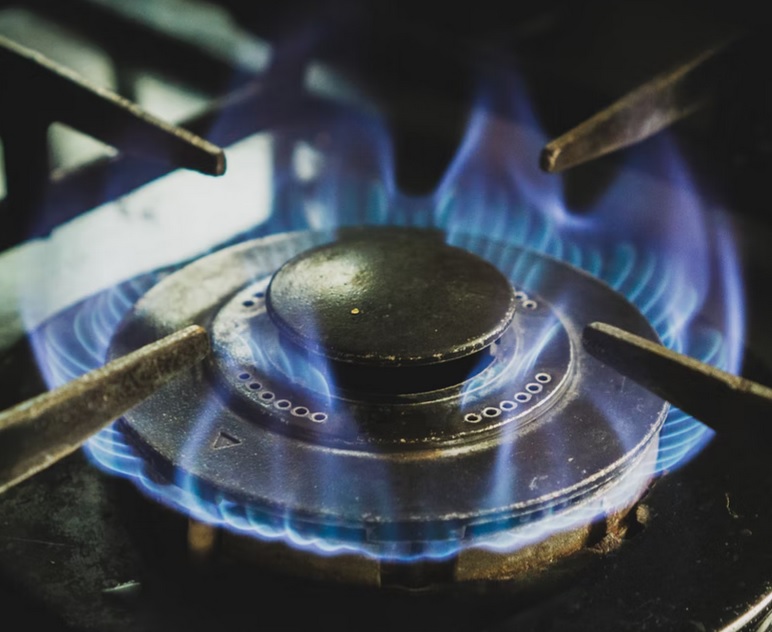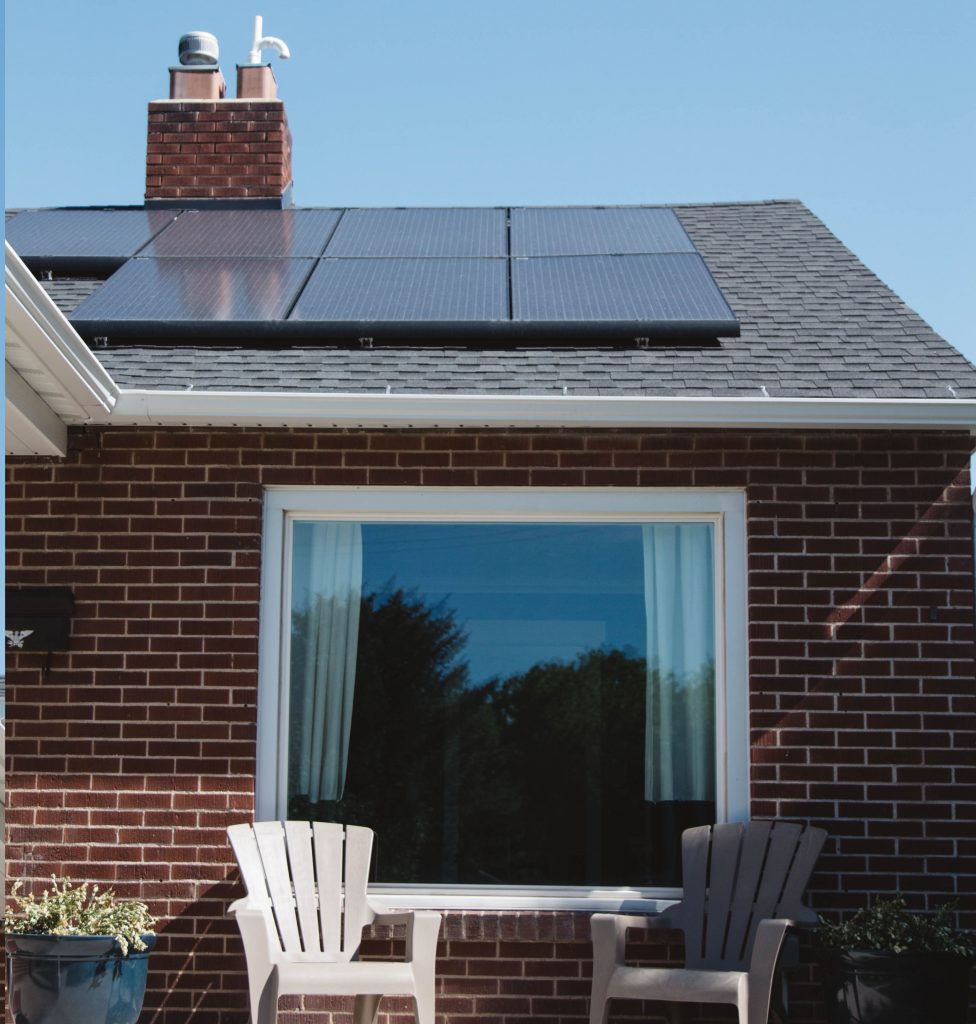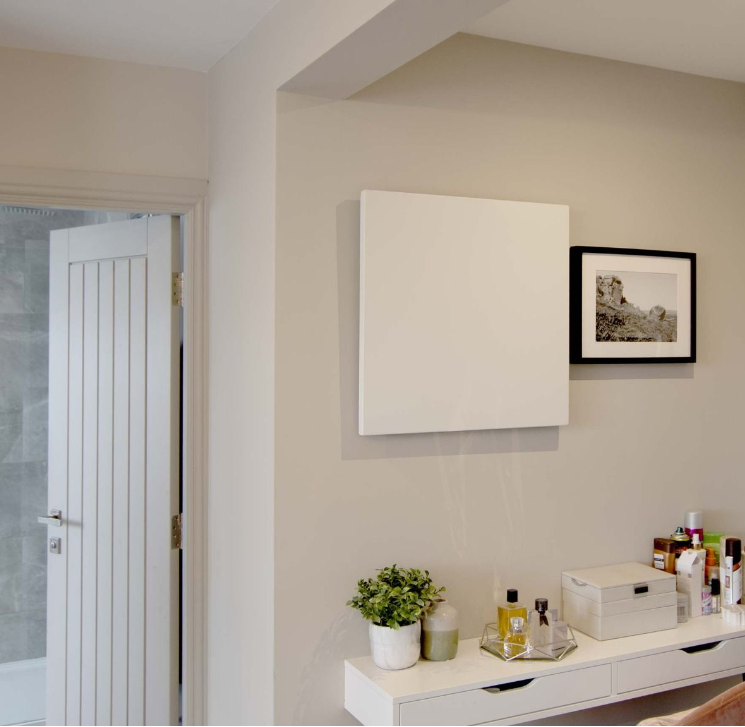Whilst gas central heating remains a popular choice for many, it’s true that more and more of us are thinking about switching to a low carbon alternative like infrared heating. Powered by electricity, these heaters offer a range of benefits that would suit any household – but are they better than traditional gas radiators? Before we weigh the two heating systems against each other, we must first take a look at how each one works.
What is gas central heating?
Gas central heating uses a boiler that is ignited by fuel which then heats up water and distributes it to your radiators via a pipe network. Using a combination of convection and radiation, these radiators supply effective and efficient warmth. However, it’s worth noting that the hot water must travel through your pipes before your radiators can start emitting heat, so you might have to wait a while before you can start enjoying ambient warmth in your home.
What is infrared heating?
Infrared heating supplies deep, responsive radiant warmth that is completely natural – in fact, we are constantly emitting and absorbing it on a daily basis! Travelling in waves, heat is absorbed by people, objects and surfaces, instead of the air in the room, meaning warmth isn’t easily lost to winds or draughts – ideal for lofty spaces and outdoor areas. With a versatile range available, from infrared wall panels to patio heaters, these solutions ultimately serve as an effective primary heating system for your whole property.
Which heating system is better for my home?
Both gas and infrared heaters offer different advantages – we’ll be comparing the heating systems in key areas to help you decide which solution best suits your property.
Efficiency
Gas

The combination of convection and radiation is an efficient formula for gas central heating. Through convection, rooms are brought quickly up to temperature by warming the air, however this type of heat can be lost easily to open doors, windows and draughts. Fortunately, that’s where radiation comes in – contributing to about a third of the heat delivered by gas, it warms on a deeper level, heating people and surfaces directly without being disturbed by air movement. As a result, you get the best of both worlds, but that doesn’t mean the efficiency of gas isn’t compromised in other ways.
System losses occur naturally at the point of combustion and up to 50% of heat is lost through the pipe system, especially if your pipes aren’t well insulated. On a macro level, gas boilers burn fossil fuels that release CO2 into the atmosphere, something the UK government is trying to curtail by banning all gas boilers in new builds from 2025. So, whilst gas does offer some level of efficiency, it ultimately falls short.
Rating out of five: ☆☆
Infrared

Powered by electricity, infrared heaters are 100% efficient at point of use, meaning every watt of energy drawn from the wall is converted into usable heat for your home or outdoor space. Not only does this mean that you know exactly where your money is going but it also reassures you that energy is only being used to supply comfortable warmth to your home, keeping heat losses to a minimum.
Unlike gas, infrared heats solely through radiation, meaning none of the warmth produced is wasted through convective heat, reducing the chances of heat being lost to draughts and winds. Instead, it is easily absorbed by surrounding surfaces, which then re-radiate warmth back into the room for a longer-lasting, more efficient heating system. Although electricity burns fossil fuels, infrared heating can be paired with a renewable energy source like solar panels, making them a 100% carbon neutral.
Rating out of five: ☆☆☆☆
Control
Gas
Gas central heating systems most commonly offer centralised control, meaning you can’t heat your home on a room-by-room basis. Fitted with TRV’s (Thermostatic Radiator Valves), each radiator would have to be manually adjusted to prevent unused spaces from being heated – an inconvenient method of control, especially for those in larger properties.
There are plenty of smart thermostatic options out there which let you control your heating via an app on your smartphone. However, to heat individual rooms, you’ll need to purchase a ‘multi-zone’ smart thermostat, which often requires professional installation. Aside from this, smart thermostats aren’t always compatible with certain boilers, particularly old ones, meaning you’d have to check with an installer before you buy. So, whilst sophisticated control options are available, they aren’t available for everyone and installing them will probably involve a lengthy callout from the contractor.
Rating out of five: ☆☆☆
Infrared
As standalone appliances, infrared heaters can be used on an individual basis, with unique temperature settings for every space so you don’t have to waste energy heating areas in your property unnecessarily. Many also come with a versatile range of control features such as 24/7 programming, which enables you to create custom schedules for each infrared heater in your home – ideal for those with busy lifestyles who want to tailor their heating to their routine.
Smart infrared heaters with WiFi control let you program warmth with an app on your phone, so you can manage your heaters from one accessible point of use, even when you’re away from home. This gives you constant access to your heating system whilst also providing you with an array of intuitive functions such as voice control, allowing you to adjust your heating with quick voice commands. Unlike gas central heating, these control options are compatible with all properties and don’t require further installation from a contractor, making infrared a truly convenient choice.
Rating out of five: ☆☆☆☆☆
Maintenance & Safety
Gas
Gas boilers rely on the ignition of fuel which poses the risk of carbon monoxide leaks – a potentially fatal health hazard that could even lead to fire and explosions if left unchecked. This is why an annual servicing must be carried out by a Gas Safe registered engineer, costing roughly £70 per annum. So, whilst these dangers can be prevented, it’s going to cost you in the long-run. Aside from this maintenance, gas radiators also need bleeding from time to time – a simple enough job but still one you’d probably rather do without.
Rating out of five: ☆☆
Infrared
Infrared heaters are powered by electricity, meaning there is no risk of carbon monoxide leaks, making this heating system 100% maintenance free, apart from the occasional dusting. They usually come with a range of safety features, like overheat protection, splashproof IP ratings and fire-resistant coatings. Generous warranties, such as the Herschel Inspire’s 10-year guarantee, lets you take comfort in the knowledge that you won’t be needing to fork out on a replacement anytime soon. With smart WiFi control, you can even ensure that your heaters are turned off when you’re away from home via the app on your smart device, for complete peace of mind.
Rating out of five: ☆☆☆☆☆
Cost
Gas

When it comes to cost, gas central heating is a cheaper energy source per unit than electric, meaning you’ll theoretically be spending less money on your heating bills – having said that, other expenses may rack up overall costs. Gas heating systems experience many heat losses through the pipe system, resulting in wasted energy and money. Maintenance fees and repair costs are also tangible, costly factors to take into consideration, especially with gas central heating coming with safety hazards.
Rating out of five: ☆☆☆
Infrared
Electricity is more expensive per unit, but their exceptional controllability makes it easier to monitor and adjust energy usage so it’s more in line with your spending targets. Warming individual rooms, on-the-go heat management and intuitive features all help you stay within your budget with minimal effort needed.
Rating out of five: ☆☆☆
Upgrade your heating today
Highly efficient, easy to control and maintenance free – infrared heating is the clear winner in our gas vs. infrared debate. Better yet, these versatile heaters often allow for DIY-friendly fitting, as well as being available in a vast array of styles, designs and finishes, so you can handpick a heater that perfectly complements your indoor or outdoor décor. So, make the switch today and browse our full range now.


